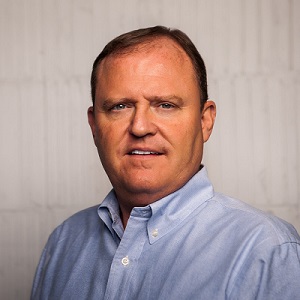What's going to happen to healthcare startup funding this year? Will the IPO market recover? And what kinds of technologies are on the up? We asked some leading CVCs for their view.

After 18 months of rapid growth for startups, 2022 saw the healthcare sector come down to earth with a bump. But how do the corporate venturers on the ground see things, and what can we look forward to in 2023? We got the lowdown from some of the biggest names in healthcare corporate venture capital.
The Panel

Pieter Wolters has spent a decade as managing director of DSM Venturing, one of the most active health and nutrition-focused corporate VC units in the world. He was previously CEO of medical device startups Isotis and OrthAlign.

Rakhshita Dhar heads up health venture investments for Leaps by Bayer. She used to be director of business development for another of the world’s biggest pharmaceutical firms, Roche.

Rob Coppedge is CEO of corporate venture capital partnership Echo Health Ventures. He has been involved in healthcare VC for a quarter of a century.

John Banta is president and managing director of Blue Venture Fund. His firm invests in health technology and services on behalf of 35 health insurance providers.
[Note: answers have been edited for length]
A cursory look at the stats shows both the number of rounds and the volume of venture funding dropped in 2022, but how was it for you?
Wolters: It’s been business as usual. We were expecting the turmoil in the public markets to also have an impact on valuations, availability of funding and things like that in our field. So, once we saw it was actually getting there we started becoming a little more careful with new things and a little more protective of the current portfolio.
On the one hand there are new opportunities, on the other you need to make sure the opportunities you’ve already started have the best chance of success. If there are less co-investors available for follow-on rounds, you don’t put all your money in new things if you then aren’t able to support them anymore. It’s a bit of a balance.
Dhar: I think 2022 has been an interesting year. It’s been an opportunistic time to invest in companies where back in 2021 valuations were probably unachievable or unattainable in some way for many investors to come in and have a piece of the pie.
A lot of those came back down to earth in 2022 and gave us an opportunity to participate in some of those investment rounds. And it’s not unique to us, I think a lot of different VCs found that to be the case in 2022. So, from a new investment perspective, I think it was fairly opportunistic.
It was [also] a chance to really think about how long this potential market is going to continue to be sort of in the red, and how do we prepare our portfolio companies to have runway not just for the rest of 2022 but also for 2023? And how do we best position them for a value inflection point that is meaningful for the next financing round?
Coppedge: It’s been a dose of realism. Obviously, there has been a lot of enthusiasm that’s come into the space and that’s been around the space in the last five years. What’s happened, triggered by macroeconomics but also just realities on the ground for the channel and strategic partners of these businesses we’re investing in, is that it’s separating some of the wheat from the chaff. And doing it with very blunt instruments.
As an investor, I think this is an aberration and the overall space will come back to a normal growth rate and a sense of what returns should be. But I think the overall sense of what success looks like in the market has shifted, and it means we have to be much more realistic about what these companies can do, what we expect them to do and how we get them there.
Banta: Honestly, despite the challenges in the capital markets it has been an incredibly productive year for us. The challenges that persist in healthcare markets are profound, and entrepreneurs that are addressing them creatively merit and continue to attract support. Enterprise players also remain active in acquiring market-tested and proven innovation, which is of course very helpful for us.

What do you think will happen to deal sizes in 2023? Will there be any improvement?
Dhar: Probably not. I don’t think this 2023 market is going to be dissimilar to 2022. You’re seeing that in the preparations both investors and management teams have been making over most of 2022.
Most of the financings that took place in 2022 were around extending runway well into Q4 of 2024. So, people expect that 2023 and largely a big part of 2024 might also be fairly rocky.
It coincides with the appetite of the market right now. Everyone is looking for a meaningful clinical data readout, and so almost all the companies that are out there raising funds or extending their runway are trying to reach that meaningful clinical data readout and that’s what they’re extending the runway for.
Banta: It seems likely given the macro picture that funding levels will continue to slow, likely again driven by decreases in mid and late-stage deal sizes. That, in many respects, has been a welcome scenario, as valuations have normalised and transactions we avoided due to accelerated processes that did not allow for adequate diligence are a thing of the past.
Undisciplined markets lead to unconstructive behaviours, and there was a great deal of that going on with new players paying prices that weren’t correlated to any sort of evaluation rubric. Long way of saying: I think those making new investments will find 2023 to be a favourable environment.
Wolters: We do observe that while a lot of people have the dry powder and could do the capital calls, they are taking it easy, and I don’t think that’s going to change in Q1. If some big topics start to improve a little bit then maybe, yes. I’m talking about the war, covid in China, inflation, all the big geoeconomic and geopolitical things going on right now.
We see a lot of flat valuations and not a whole lot of up, and some that looks like ‘flat’, but if you really look at it, it starts becoming down-ish on a fully-diluted-capital level. Of course, nobody likes the words ‘down round’ and nobody wants to show down rounds, especially not financial investors.
How long is that going to take to improve? It will definitely be a while, but we’re also prepared for it to pick up again and that’s why we want to be in the game.
“We see a lot of flat valuations and not a whole lot of up”
Coppedge: There is so much capital penned up on the sidelines that’s going to need to get deployed and my sense is that will coincide with more reasonable valuation expectations than we’ve seen in the past couple of years. Those two trends have to intersect at some point this year.
I think the declared winners in this space, the platforming companies that were able to do well last year and continue to show a growth rate and know how to sell, they will continue to command premium valuations.
It’s that middle ground of companies that maybe haven’t gotten to that level but have good leadership and great strategies and such, those are the ones I think may have to be a little more reasonable than they were in 2020 and 2021.
We’ve seen a long IPO drought this year. Do you see that changing in 2023? If not, how will late-stage companies fare?
Coppedge: I’ve been in healthcare venture capital since the mid-90’s and we’ve had IPO lulls for the bulk of my career, so the aberration has been the buoyant market we’ve seen over the past five years.
I think the healthcare venture space can be a very healthy space with strategic buyers, trade sales, private equity buyers, it just forces us to have more valuation disappointment, to capitalise businesses in the right way and be more capital efficient in how we build them.
I don’t know how to call the pocket on whether the IPO market comes back but I do believe it’s very possible for smart healthcare investors to do very well in a market like this where the IPO market is closed, if they are disciplined in their investment approach.
Dhar: It’s not all bad news. Obviously, there have been some conservative bets that have also been placed both last year and back in 2021. I think in 2023 there are quite a few companies within the broader biotech market that will have meaningful clinical data readouts – specifically safety data readouts – and that will be a huge trigger for both pharma companies to step in and get some good deals in place, whether it’s partnerships or M&A deals.

Banta: During several stretches of 2022, mutual funds, life science specialists and hedge funds were all active cohorts ready to support health services and biotech alike. The real question is when will things be ‘back on track’? The prudent answer is that it could be some time, and portfolios need to be resilient at this point, have plenty of runway and pursue managed growth with an eye on unit level economics and core capabilities.
Of course, IPOs aren’t the only exit route for healthcare startups. Do you think M&A deals will fill the gap?
Coppedge: We’re already seeing it. We’ve already seen a lot of large strategics, large corporates doing really high-profile acquisitions, and the word on the floor at (healthcare innovation conference) HLTH was that the conference was largely a court dev exhibition. You had all these companies there that were just being looked at by other companies because they think there’s going to be a wave of consolidation: larger venture-backed businesses picking up smaller ones, growth equity companies picking up smaller venture-backed businesses and so on.
Scale efficiency, capital efficiency, channel distribution – all those things matter a lot more right now. And I can think of a good handful of active conversations I’m aware of that support that hypothesis.
Wolters: I think the buyers are being careful with their money and with where valuations are going to be. If they have a sense valuations might decrease at relatively short notice, they’re going to be waiting.
You don’t see a lot of people in a hurry right now but there is activity – also in our portfolio. We had exits during the year and have several companies in exit discussions right now. But it’s slower, it’s less heated.
Dhar: Part of it is that everyone is taking a good look at how the market’s going to play out, being disciplined about their approach and making sure they’re not running into buying stuff or partnering with companies just because it’s cheap right now.
I think what we’re going to see in 2023 is a more meaningful look at companies that are too far away and with an unclear path to a meaningful value inflection point from a data perspective.
Some people are going to take harsh but responsible decisions to wind down some of these companies. We were already seeing some of that happening in 2022 but more of that might happen in 2023, especially for those that were not able to extend their runway last year. They might be in hot water in 2023 if they’re not able to secure the financing to get to some sort of meaningful value inflection point.
What factors are going to be driving your investment decisions in 2023, and which areas are primed for growth?
Banta: Health systems globally are finally embracing the importance and near universal co-morbidity of behavioural health with both acute and chronic medical conditions, so our long-standing emphasis on multiple forms of delivery of that capability to a variety of populations will not slow.
Addressing administrative waste, improving on personalised customer experience, and driving convergence and alignment amongst payer and provider relationships will also be areas of emphasis, as they have been in the past.
Dhar: Within healthcare we are interested in oncology, genetic diseases, immunology [and others]. But those themes will continue to be core to what our mandate is, and we will continue to be focused on platform technologies only.
The central nervous system (CNS) continues to be the space that has the biggest gap right now in terms of medicines for patients or even early research fuelling that space, getting to something that is ready in the clinic or close to getting into it.
There are a lot of new technologies in the CNS space that are getting to that point of identifying new targets or unravelling new biology. But it continues to be a very tough space scientifically, and I think we’ll continue to have a lot of attention from an investment standpoint and a new company formation standpoint.
Other than the disease area, I think the big theme within the pharmaceutical industry is going to be ‘clinical data is king’. Where we haven’t been as forward thinking in years past, where we’ve had a wonderful biotech market, great exits and great companies being partnered up, everyone now has had to take a little bit more of a diligent approach. Clinical data reading out in 2023 is going to be king.
Coppedge: If you look at all the venture capital input into technologies in the past five, six, seven years and the lack of impact they’ve truly had on the care delivery market, we believe sometimes we get carried away by the technology and forget these technologies fall into a broader care delivery ecosystem.
At the trade shows five years ago, you saw a million telehealth businesses. Now you see a reasonable number and they’re very specialised. This year at HLTH, there were 8 million behavioural health companies – which is a huge, glaring need in this market – but we’ve now had a thousand flowers bloom and we need to figure out where the trees start growing.
Because it’s not going to be that there’s this dispersion of solutions, [people] have to realise how they’re going to fit into the broader care continuum, the payment architecture, and I think we’ll see this swing back to platforms, which has happened repeatedly in my career.
I think the companies that have got better are starting to innovate, not so much in the sciences but in the business models and technologies that are needed to help make sure therapies get to the right people and that we have apparatus to finance services. We’re going to see a flourishing of activity in that space, which is great because we need it.
Wolters: Long term, I’d say precision, symbiosis, versions of data plays with the microbiome – things like that. But that’s not last year, this year or next year, these are trends and they make so much sense that they will pick up, but it’s hard to say what the timing of it will be in the market.
In those fields there are new topics. One is that microbiome and gut health has been in the spotlight for quite a while. After some initial excitement, there has been a bit of a lull when regulatory routes needed to be more fine-tuned. And now you are seeing new subareas of interest, like the relationship between gut health and brain health.

Lastly, what are your personal aims for 2023?
Wolters: These are good times to really focus on the quality of investments you make, which means the companies you invest in, the teams there, your own team and the interactions with the DSM business. We’re going to be doing a lot of follow-ons this year, we know that for sure. But we will make the follow-on investments in companies where we really see the quality and progress.
On a more holistic level, with everything going on in the world I think there’s a realisation that what you can influence has its limits, and we’re really trying to really go for quality within those limits.
Coppedge: As we look at new investments and as I look at how we organise the firm, where our resources go and where our priorities are, in 2023 I want everything we do as a firm to be focused not just on returns but how, in a healthcare market that so badly needs transformation, how can we not waste another year of truly driving the scale of impact I believe our platform and others like us can drive?
Dhar: For 2023, I would love to see my portfolio companies continue to do well, either as we position them for their next financing round or the next data readouts that are meaningful for them. That would be my professional goal, for our portfolio companies to really do well and get to the next stage of their value inflection point.
Banta: We are always learning. If we don’t feel smarter a year from now, something will not be working correctly in our process.










